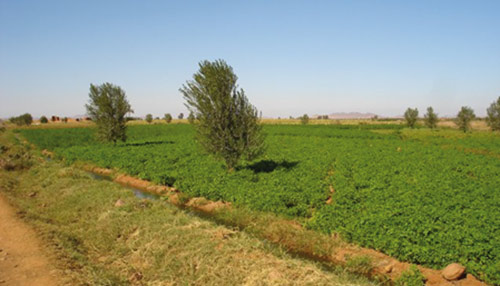A major project valued at 2.7 Million Dirhams will allow for 167.000 m3 of water to be produced daily between now and 2018 for irrigating the region’s crops. For the very first time in Morocco, a seawater desalination plant will be coming into operation near Agadir, in conjunction with a major irrigation project. The project will be developed as a public-private partnership with a service life of 30 years.
The desalination plant will be located in the South of Agadir and should produce 167,000 m3 of desalinated water per day. It will thus help to cover the area’s annual water deficit of 60 million m3.
The regulating authorities have, therefore, decided on a multi-source supply plan for the region: using conventional waters from the dam and aquifer plus the desalinated water. Furthermore, the farmers will have to respect the quotas for withdrawing water from the aquifer. No agricultural extensions to the quotas will be permitted, except for those farmers using desalinated water. In time, demineralised water should cover 50% of their requirements.
The project comprises three stages: the construction of the desalination plant, the implementation of the irrigation system and the use of the infrastructures for 30 years.
The price per m3 of desalinated water will be calculated according to the production costs and should be somewhere around 6 to 7 DH. By way of comparison, the dam water costs 1 DH/m3 and water from the aquifer between 2 and 3 DH/m3. The depreciation expenses will be borne by the State and the price should be as close as possible to the operating cost, with the energy cost making up 60% of this. However, the price should not be prohibitive for the large-scale farmers.
By overriding the climatic uncertainties, this project represents a guarantee for their investments and a stable turnover. Furthermore, some of these farmers have already installed small-scale desalination plants, with little regard for the environmental risks involved. It will come into operation in late 2018.
